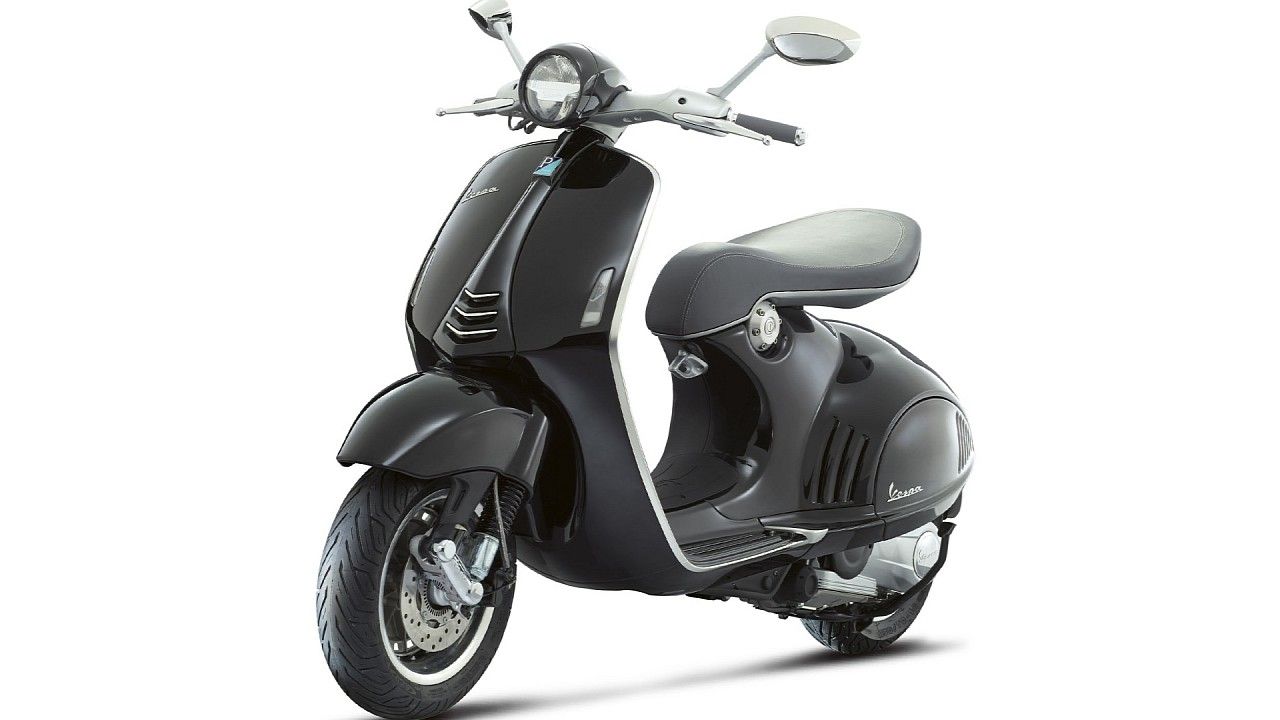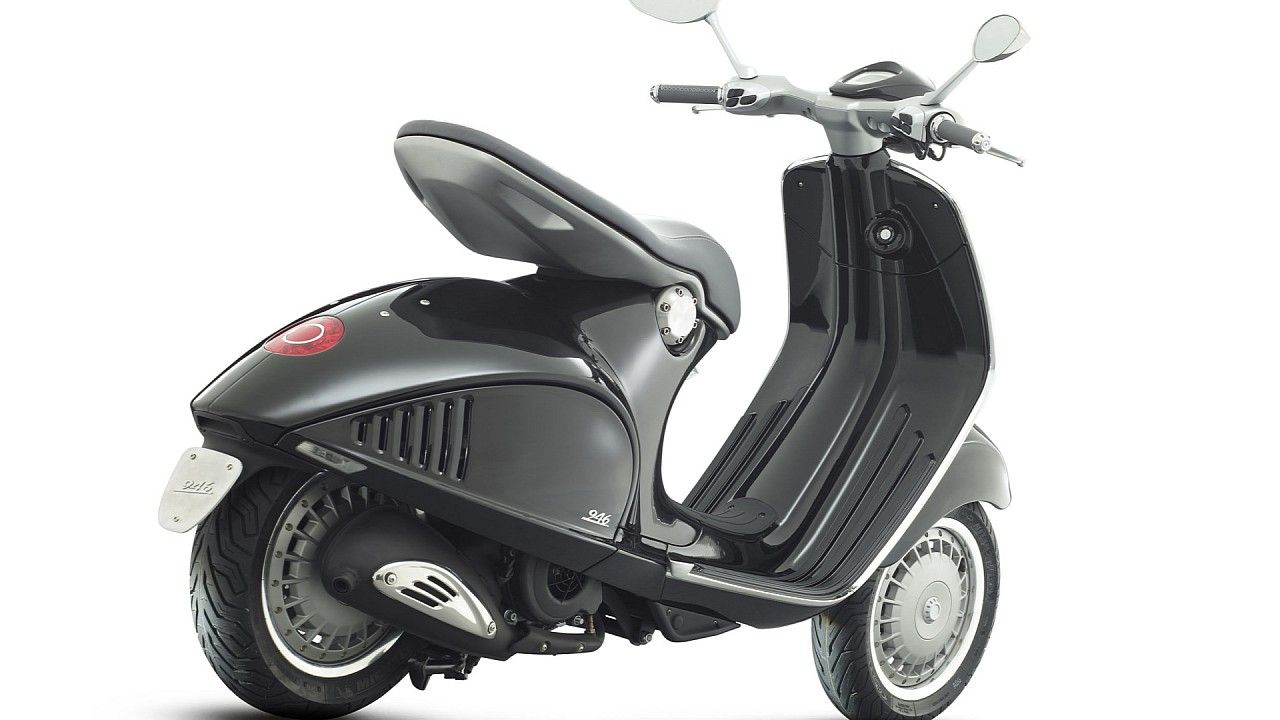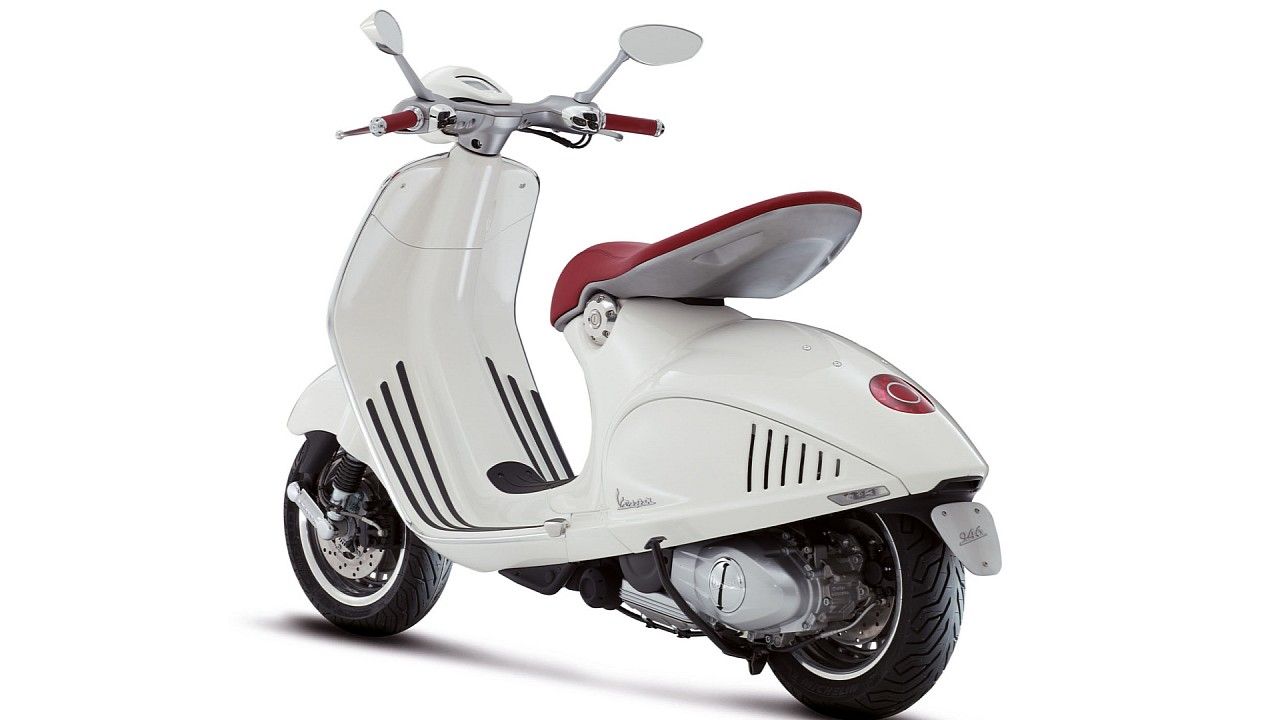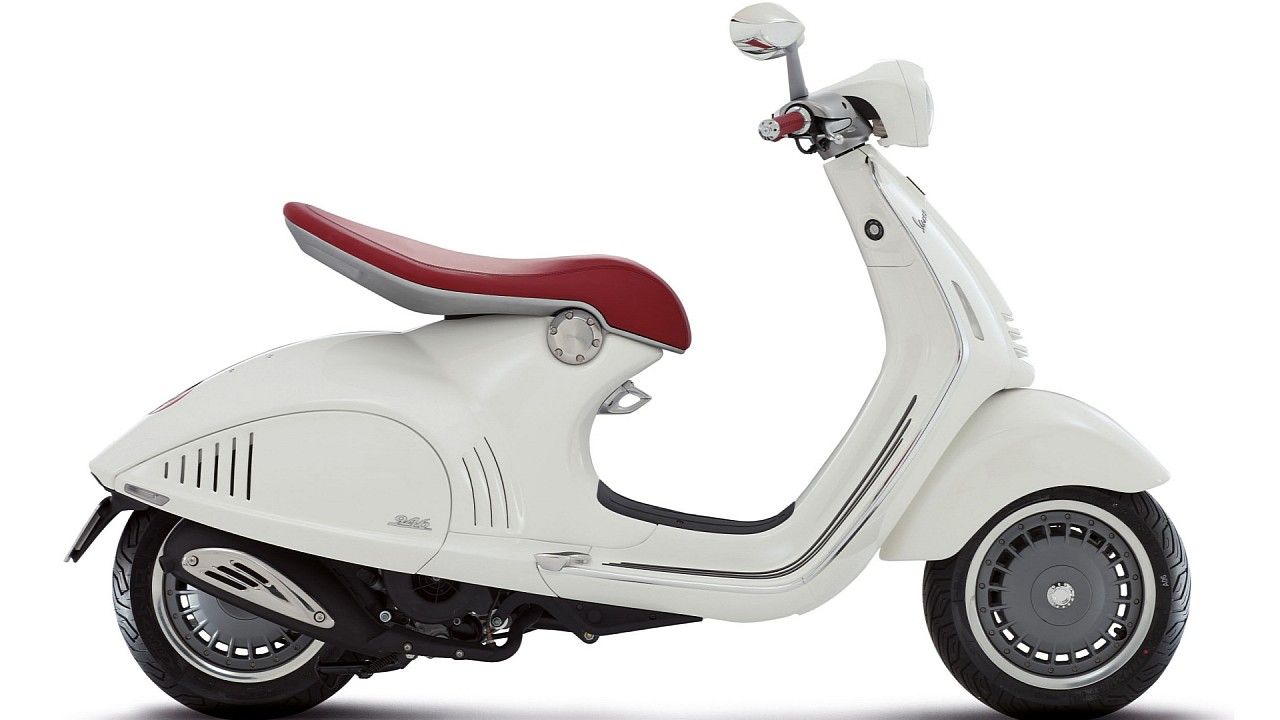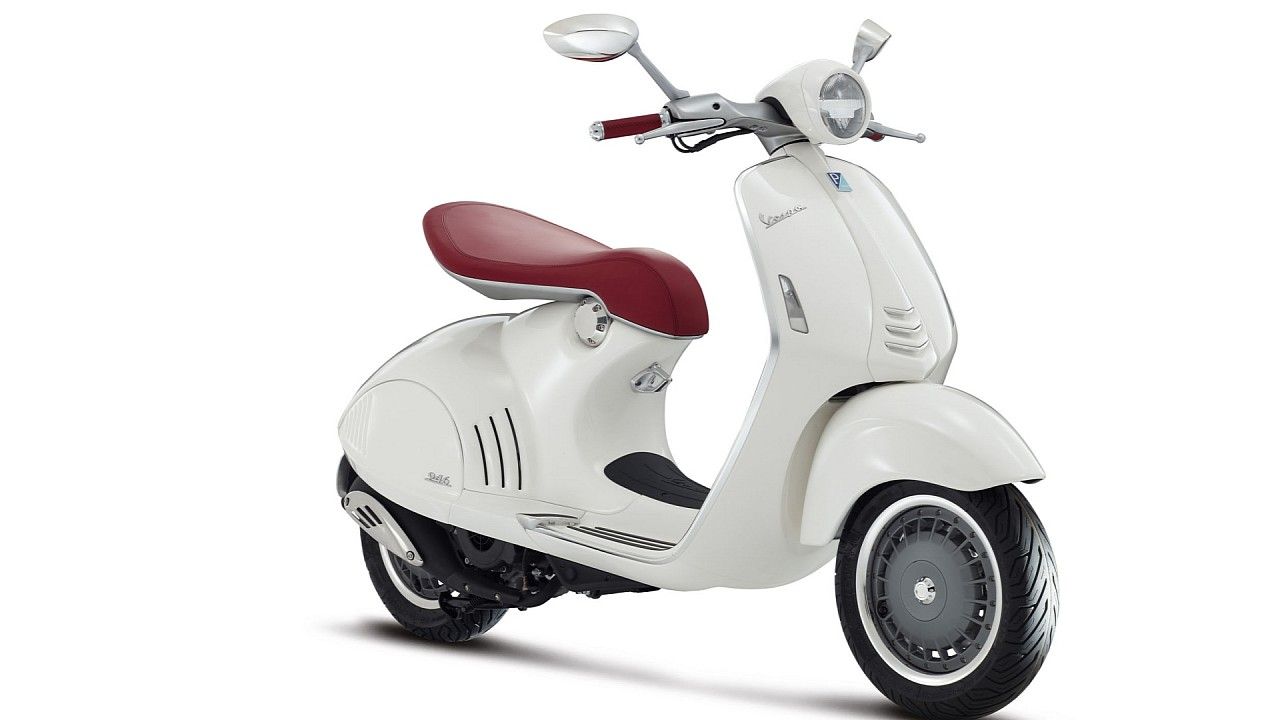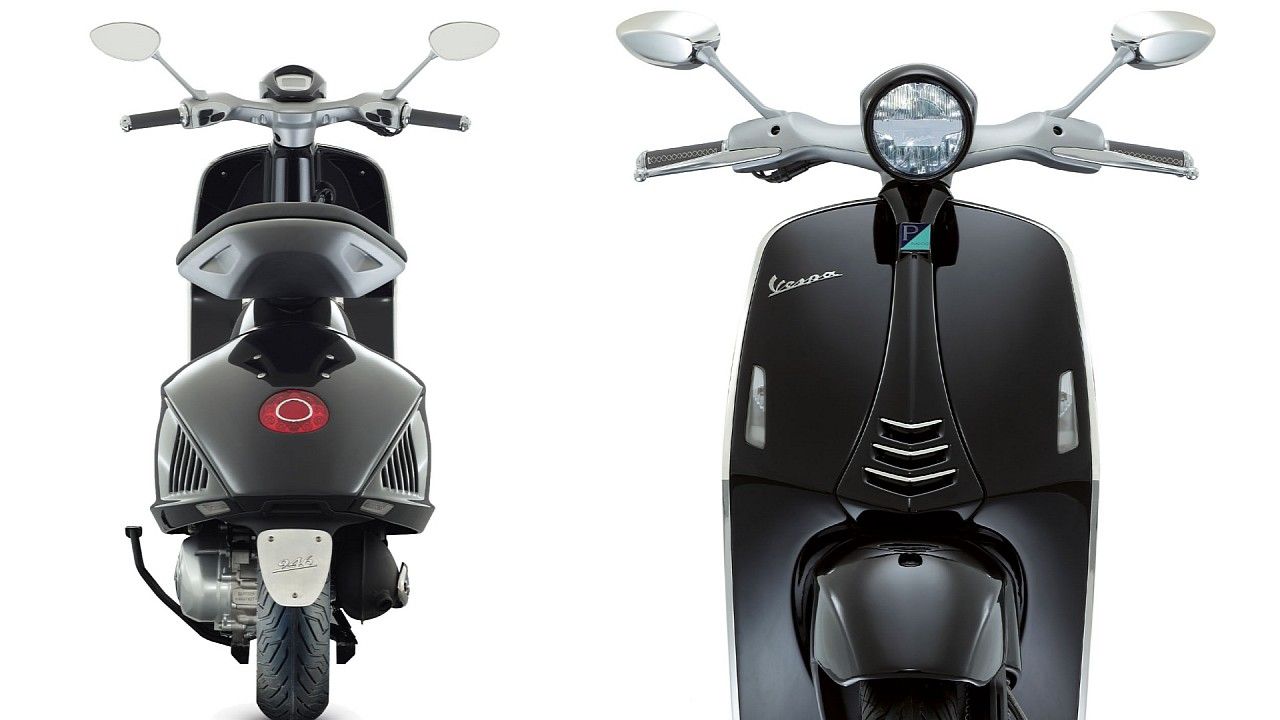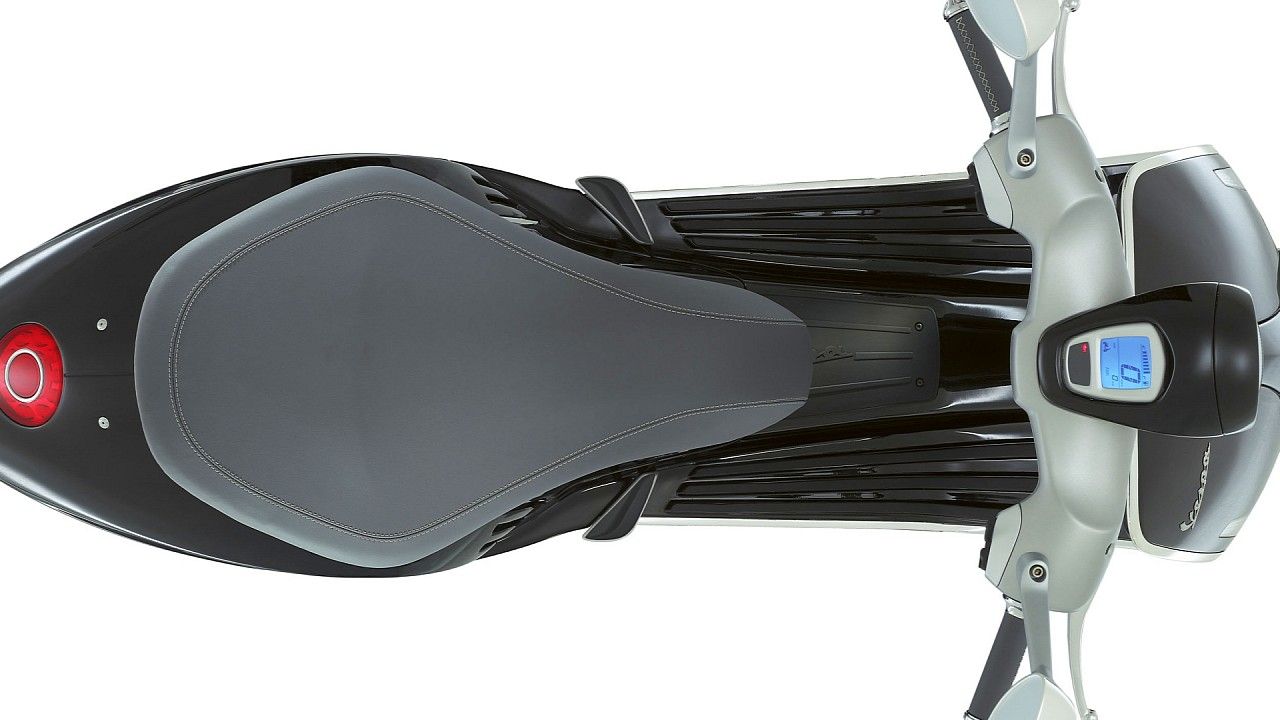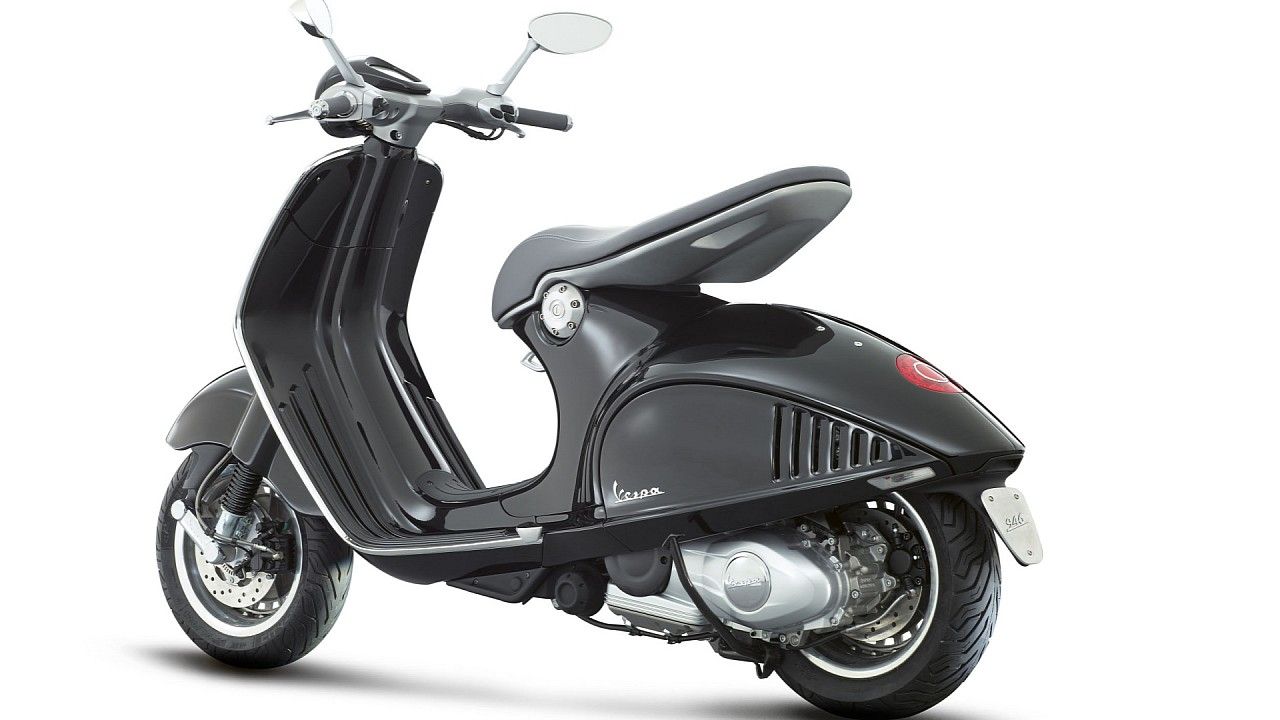The 2013 Vespa 946 is a small scooter that was especially developed to help you move with agility around the city.
As far as style is concerned, the Vespa 946 draws inspiration from the first Vespa prototype of 1946, featuring a retro design combined with a few contemporary lines.
The scooter’s distinctive element is its body which is technically a single steel and aluminium component which also has a supporting function. Thanks to its modern body and the intensive use of aluminum, the scooter has a very low curb weight which is combined with an upgraded 125cc, 3 valve, 4 stroke, air cooled engine to offer an impressive fuel consumption rated at 155 mpg.
In terms of power the 2013 engine rewards you with a maximum output of 11 hp - a 7.1 percent power increase compared to the previous generation.
Hit the jump for more information on the 2013 Vespa 946.
2013 Vespa 946
- Make: Array
- Model: 2013 Vespa 946
- Engine/Motor: 3 valve, 4 stroke, air cooled engine.
- Horsepower: 11
- Torque: 7
- Transmission: Automatic
- [do not use] Vehicle Model: Array
Overview
Since 1946 Vespa has been established as a unique case of style and technology, meeting the demand for freedom of entire generations and pointing the way for the world where individual mobility is concerned, synonymous with emancipation.
For sixty-six years Vespa has incessantly renewed its myth, always evolving its unique concept of form-function.
Features
Essence of style.
Today, after having put more than seventeen million vehicles on streets throughout the world, and becoming a legend worldwide, Vespa unveils its future.
It does so by directly referring to its original product, the MP6 prototype, first embryo of the Vespa from which, in the spring of 1946, the world's most famous scooter was born, an Italian and unsurpassed icon of style and creativity.
Distilling the purest essence of those traits which marked forever the aesthetics of individual mobility, forcefully entering our everyday life and enhancing the lines which made it famous, the Pontedera Style Centre projects the Vespa in a new generation in which references and projections, tradition and innovation, seamlessly merge. Once again Vespa is ahead of its time, projecting itself into a future marked by style and technology at the service of a better quality of life.
Vespa 946, with unswerving fidelity to the original idea, adopts the solution of the monocoque. The structure, unique in its kind, is made of welded steel but, for the first time in Vespa history, is embellished with elements in aluminium alloy.
The result is a unique and valuable piece which acquires, since its first appearance, a special place in the magnificent history of Vespa, an object destined to perform, at the highest level, its natural function of mobility but which immediately represents an
object of distinction in the urban and metropolitan landscape. Vespa 946 is a unique and evocative object which embodies, and exhibits with class, all the values of style and elegance which derive from the nobility of its origin. Vespa 946 expresses the maximum value possible in the scooter world and projects Vespa in the elite of luxury brands.
Design
As always in the history of Vespa the technically distinctive element is the body. A single steel and aluminium component which also has a supporting function, housing and supporting the engine, transmission and all the mechanical parts.
The masterful construction quality and excellent materials used set Vespa 946 apart from any other two-wheeled vehicle in the world. The use of aluminium contributes, as well as to the definition of breathtaking aesthetics, to lighter weight and therefore an increase in energy efficiency, with the result of lower fuel consumption and emissions.
Directly inspired by the Mp6, the first Vespa prototype of 1946, the 946 is a decisive discontinuity with the shapes of the current - and successful - Vespa families. Traditionally divided into "small body" (the current LX and S series) and "large body" (represented by the GTS and GTV) Vespa now sees the birth of an entirely new vehicle which, while making reference to the classical lines, breaks with the constant evolution of the design with a sort of fascinating "back to the future".
Vespa 946 distils and condenses the best characteristics of Vespas which over the decades have preceded it, admirably entwining the best of the features of the various Vespa families. The fundamental measurement of the chassis, the wheelbase, is testimony to a stable vehicle, overcoming the distance between wheel hubs of the big GTS. But the lightweight line, reduced weight and steering angle similar to that of the small LX make it exceptionally agile.
The suspension department is distinguished by the originality of the front element (the classic swing arm, one of the style characteristics of the Vespa) and by the refinement of the solution adopted on the rear wheel. For the first time in the history of the Vespa, the single shock absorber - a gas unit with adjustable preload in four positions - is mounted horizontally with progressive lever system. A solution which has avoided impacting the pure lines of the rear of the Vespa 946.
The lights, full LED, are one of the distinctive elements of the Vespa 946. In particular, the headlamp which is implemented with Full LED technology, stands out.
The saddle, mounted on an aluminium support, is an extraordinary design element, capable of gracefully marking the overall design of the Vespa 946, at the service of functionality. Hinged on a cast aluminium support, the saddle is made of fine waterproof fabric.
The front mudguard, in aluminium, covers with the usual elegance the 12 inch wheel. The same size as the rear wheel. The separable wheel rims, the largest size ever achieved on a Vespa, further embellish the 946. The braking system, in search of maximum safety, is double disc and comes complete with two-channel ABS system controlled by a control unit with dedicated software.
Vespa 946 is equipped with the innovative ASR traction control, an advanced electronic system which prevents slippage of the rear wheel, avoiding loss of adhesion and always ensuring optimal traction. A unique technological sophistication of the Piaggio Group, for the first time on Vespa.
Technology
Vespa 946 opens a window to the future in technology as well.
The pulsating heart of the Vespa 946 is an extremely modern engine which reveals the lines of development of engines of the future, characterised by reduced fuel consumption and a dramatic reduction of gaseous and noise emissions.
The single cylinder 125 cc 4 stroke, 3 valve, air cooled engine with electronic injection represents Piaggio Group's state of the art technology in scooter engines.
The engine has been entirely designed, developed and manufactured in Pontedera, in the largest plant of the Piaggio Group, which is one of the most important and advanced research, development and production centres in the engine field worldwide. This engine is born from the challenge that the Piaggio Group has taken on: to provide an increasingly more evolved customer with a product that guarantees performance, reliability and safety while also leading the field in respect for the environment.
To obtain greater performance while reducing fuel consumption and emissions, a scrupulous analysis of reduction of friction and improvement of fluid dynamics was carried out.
The innovative 3-valve timing system which characterises the Vespa 946 engine optimises loading movements in the cylinder in terms of both tumble and swirl, as well as placing the spark plug in an optimal position, improving the efficiency of the combustion process and at the same time ensuring optimum cooling of the internal parts of the head.
For all moving parts, bearings have been used for the maximum reduction of internal friction: the timing rockers have a roller, to the benefit of noise reduction and mechanical efficiency, the camshaft is on bearings, as too the entire final reducer.
In the search for the best performance/fuel consumption ratio, the 3 valve timing solution is the most effective because it improves intake, increasing engine efficiency compared to conventional 2 valve engines.
The cooling system has been the subject of careful analysis in order to improve performance even further, thereby obtaining a significant reduction in terms of acoustics and power absorption.
The injection system is state of the art in terms of functionality and rideability, with automatic idling control and closed-loop fuel mixture management with lambda probe. The three dimensional maps of advance, titre and injection timing are managed by a new generation control unit. Together with the trivalent catalytic converter, compliance with Euro3 standard is guaranteed with ample margin, also with a view to future legislation, increasingly stringent in terms of reduction of polluting emissions.
Performance, with maximum shaft power of 8.5 kW at 8,250 rpm and maximum torque of 10.7 Nm at 6,500 rpm put the new engine at the top of its category.
The Vespa 946 125 3V represents a net improvement in performance compared to previous generation engines: maximum power increases by 7.1% and maximum torque by 10.3%.
Despite the substantial increases in performance, excellent results have been obtained in terms of fuel consumption: at 50 km/h the range is 55 km/l (approx. 30% more than in the previous generation engine). Moreover, maintenance intervals, now scheduled at 10,000 km, mean that the new 3V engine has even lower costs.
Specifications
|
Engine Type |
3 valve, 4 stroke, air cooled engine. |
|
Fuel System |
Fuel Injection |
|
Fuel Efficiency |
155MPG |
|
Engine Capacity |
125cc |
|
Power |
11 bhp |
|
Torque |
7 lb.ft |
|
Breaking System |
ABS |
|
Price |
£7812 |


